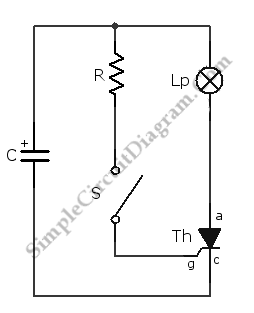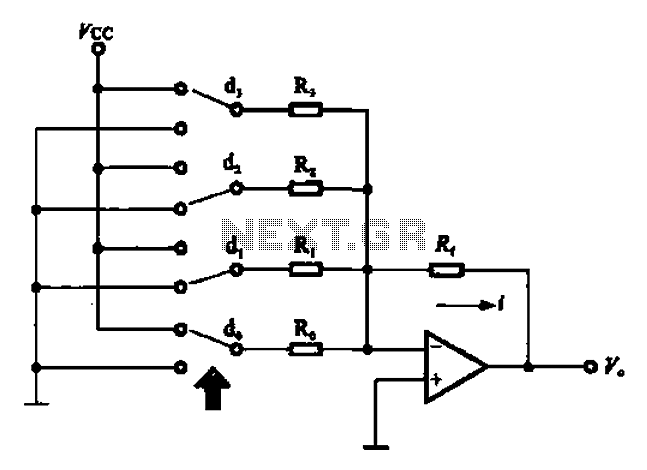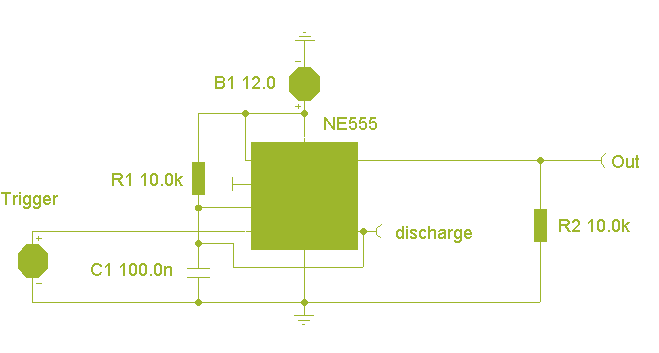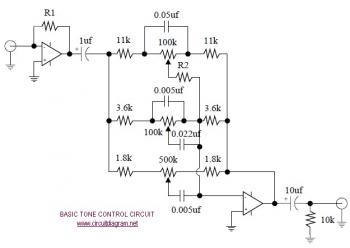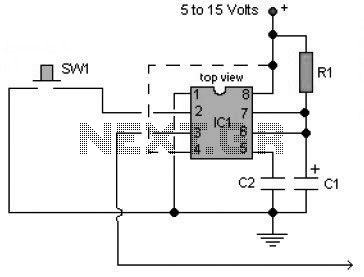
Basic IR Detector/Emitter
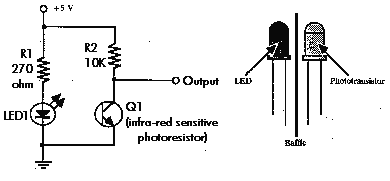
This is a very basic infrared detector/emitter circuit. One major downside of this circuit, is that ambient infrared light will interfere with its detecting obstacles.
The described circuit functions as a basic infrared (IR) detector and emitter system, commonly utilized in various applications such as obstacle detection, remote control systems, and simple proximity sensors. The core components typically include an infrared LED (emitter) and a photodiode or phototransistor (detector).
In operation, the infrared LED emits light in the infrared spectrum, which is not visible to the human eye. When this emitted light encounters an object, it reflects back towards the detector. The photodiode or phototransistor is sensitive to the reflected IR light and generates a corresponding electrical signal. This signal can then be processed to determine the presence or distance of an object.
One significant limitation of this basic design is its susceptibility to ambient infrared light sources, such as sunlight or artificial lighting, which may interfere with the detection of obstacles. This interference can lead to false readings or reduced sensitivity, as the detector may respond to the background IR signals rather than solely the reflected light from the intended object.
To enhance the performance of this circuit, various modifications can be considered. For example, incorporating a modulation technique where the IR LED is pulsed at a specific frequency can help differentiate between ambient light and the signal from the reflected IR light. Additionally, using filters that only allow specific wavelengths of light to reach the detector can minimize interference from unwanted sources.
Circuit design may also include amplifying stages to boost the signal from the detector, enabling better detection capabilities. Moreover, integrating a microcontroller can facilitate advanced processing, allowing for more sophisticated obstacle detection algorithms and the ability to adjust sensitivity dynamically based on environmental conditions.
Overall, while this basic infrared detector/emitter circuit serves fundamental applications, enhancements and careful consideration of ambient light conditions are crucial for improving reliability and accuracy in real-world scenarios.This is a very basic infrared detector/emitter circuit. One major downside of this circuit, is that ambient infrared light will interfere with its detecting obstacles. 🔗 External reference
The described circuit functions as a basic infrared (IR) detector and emitter system, commonly utilized in various applications such as obstacle detection, remote control systems, and simple proximity sensors. The core components typically include an infrared LED (emitter) and a photodiode or phototransistor (detector).
In operation, the infrared LED emits light in the infrared spectrum, which is not visible to the human eye. When this emitted light encounters an object, it reflects back towards the detector. The photodiode or phototransistor is sensitive to the reflected IR light and generates a corresponding electrical signal. This signal can then be processed to determine the presence or distance of an object.
One significant limitation of this basic design is its susceptibility to ambient infrared light sources, such as sunlight or artificial lighting, which may interfere with the detection of obstacles. This interference can lead to false readings or reduced sensitivity, as the detector may respond to the background IR signals rather than solely the reflected light from the intended object.
To enhance the performance of this circuit, various modifications can be considered. For example, incorporating a modulation technique where the IR LED is pulsed at a specific frequency can help differentiate between ambient light and the signal from the reflected IR light. Additionally, using filters that only allow specific wavelengths of light to reach the detector can minimize interference from unwanted sources.
Circuit design may also include amplifying stages to boost the signal from the detector, enabling better detection capabilities. Moreover, integrating a microcontroller can facilitate advanced processing, allowing for more sophisticated obstacle detection algorithms and the ability to adjust sensitivity dynamically based on environmental conditions.
Overall, while this basic infrared detector/emitter circuit serves fundamental applications, enhancements and careful consideration of ambient light conditions are crucial for improving reliability and accuracy in real-world scenarios.This is a very basic infrared detector/emitter circuit. One major downside of this circuit, is that ambient infrared light will interfere with its detecting obstacles. 🔗 External reference
Warning: include(partials/cookie-banner.php): Failed to open stream: Permission denied in /var/www/html/nextgr/view-circuit.php on line 713
Warning: include(): Failed opening 'partials/cookie-banner.php' for inclusion (include_path='.:/usr/share/php') in /var/www/html/nextgr/view-circuit.php on line 713
